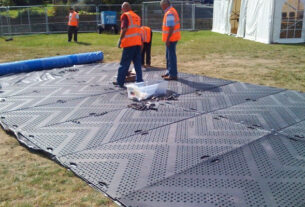In the world of advanced nanomaterials, boron nitride nanotubes stand out as remarkable structures with exceptional properties and a multiple applications. These cylindrical nanostructures, composed of boron and nitrogen atoms, have captured the attention of scientists and engineers worldwide due to their unique characteristics and potential uses. This article delves into the captivating realm of boron nitride nanotubes, exploring their properties, applications, and the transformative impact they’re making across diverse industries.
Explore the fascinating world of boron nitride nanotubes and their wide-ranging properties and applications. Discover how these advanced nanomaterials are revolutionizing various industries.
Properties and Applications of Boron Nitride Nanotubes: A Closer Look
Boron Nitride Nanotubes: An Overview Boron nitride nanotubes (BNNTs) are a class of nanomaterials with a tubular structure similar to carbon nanotubes. The key difference lies in their composition, with BNNTs consisting of alternating boron and nitrogen atoms. This configuration grants them exceptional thermal, mechanical, and electrical properties. BNNTs are known for their high thermal stability, making them suitable for applications in extreme environments.
Extraordinary Thermal Conductivity
One of the standout properties of BNNTs is their extraordinary thermal conductivity. They possess the ability to conduct heat exceptionally well, outperforming even traditional materials like copper. This property makes them invaluable for thermal management in electronics, aerospace, and energy systems. Imagine more efficient heat consumption in high-power electronic devices and enhanced performance in spacecraft components.
Mechanical Strength and Flexibility
BNNTs exhibit remarkable mechanical strength and flexibility, thanks to their strong covalent bonds between boron and nitrogen atoms. They can withstand immense pressures and strains without undergoing significant structural deformation. This property opens the door to applications in advanced materials, such as lightweight and ultra-strong composites for the aerospace and automotive industries.
Dielectric Properties
Being excellent electrical insulators, BNNTs find utility in various electrical applications. Their high dielectric strength makes them suitable for use in insulating materials, capacitors, and even nanoelectronic devices. This characteristic contributes to improved efficiency and safety in electronic systems.
Optical Transparency
BNNTs possess exceptional optical transparency across a wide range of wavelengths, from ultraviolet to infrared. This property has implications for transparent and flexible displays, optical sensors, and advanced light-emitting devices. Imagine next-generation wearable technology with seamless integration of display and functionality.
Applications Across Industries
Nanomedicine: Revolutionizing Drug Delivery
In the field of medicine, BNNTs hold immense potential for targeted drug delivery. Due to their biocompatibility and high surface area, they can be functionalized with drugs and precisely delivered to specific cells or tissues, minimizing side effects and improving treatment efficacy. This could revolutionize how we approach cancer therapy and other medical treatments.
Aerospace and Materials Science: Elevating Performance
BNNTs are making waves in aerospace and materials science. Their exceptional thermal and mechanical properties make them ideal candidates for lightweight and durable materials used in aircraft, spacecraft, and satellites. From enhancing fuel efficiency to ensuring structural integrity, BNNTs are reshaping the future of aerospace engineering.
Energy Storage: Powering the Future
The energy storage sector also benefits from BNNTs. As electrode materials in batteries and supercapacitors, BNNTs can significantly enhance energy storage capacity and charge-discharge rates. This innovation gives the way for longer-lasting portable devices and faster-charging electric vehicles.
Environmental Remediation: Cleaning Up Contaminants
BNNTs’ unique properties extend to environmental applications as well. They can adsorb various pollutants and contaminants, effectively removing them from air and water. This capability holds promise for addressing environmental challenges and ensuring cleaner air and water for communities worldwide.
Frequently Asked Questions (FAQs)
Q: Can BNNTs be used in medical imaging?
A: Absolutely! BNNTs’ optical transparency makes them suitable for various imaging techniques, such as fluorescence imaging and photoacoustic imaging.
Q: Are there any safety concerns associated with BNNTs?
A: While BNNTs show promise, their safety is still being studied extensively. Preliminary research suggests their biocompatibility, but more investigation is needed before widespread medical use.
Q: How do BNNTs compare to carbon nanotubes?
A: Both BNNTs and carbon nanotubes have unique properties. BNNTs excel in high thermal conductivity and dielectric strength, while carbon nanotubes are known for their exceptional electrical conductivity.
Q: Can BNNTs be integrated into wearable technology?
A: Certainly! BNNTs’ optical transparency and flexibility make them excellent candidates for transparent displays and sensors in wearable devices.
Q: What challenges do BNNTs face in industrial adoption?
A: Production scalability and cost-effectiveness are two primary challenges. Developing efficient synthesis methods and reducing production costs are areas of ongoing research.
Q: Are there any upcoming breakthroughs involving BNNTs?
A: Researchers are exploring novel applications, such as BNNT-based nanocomposites for advanced filtration systems and high-performance textiles.
Conclusion
The scope of nanotechnology is rapidly evolving, and boron nitride nanotubes are at the frontline of this revolution. Their exceptional properties, from thermal conductivity to mechanical strength, open up a world of possibilities across industries. Whether it’s advancing medicine, aerospace engineering, energy storage, or environmental sustainability, Find here the best boron nitride supplier that is proving versatile and transformative materials. As research continues and technology matures, we can expect to witness even more groundbreaking applications of boron nitride nanotubes that shape the future of innovation.

James Oliver is a professional blogger and a seasoned Content writer for technologyspell.com. With a passion for simplifying technology and digital topics, he provides valuable insights to a diverse online audience. With four years of experience, James has polished his skills as a professional blogger.




